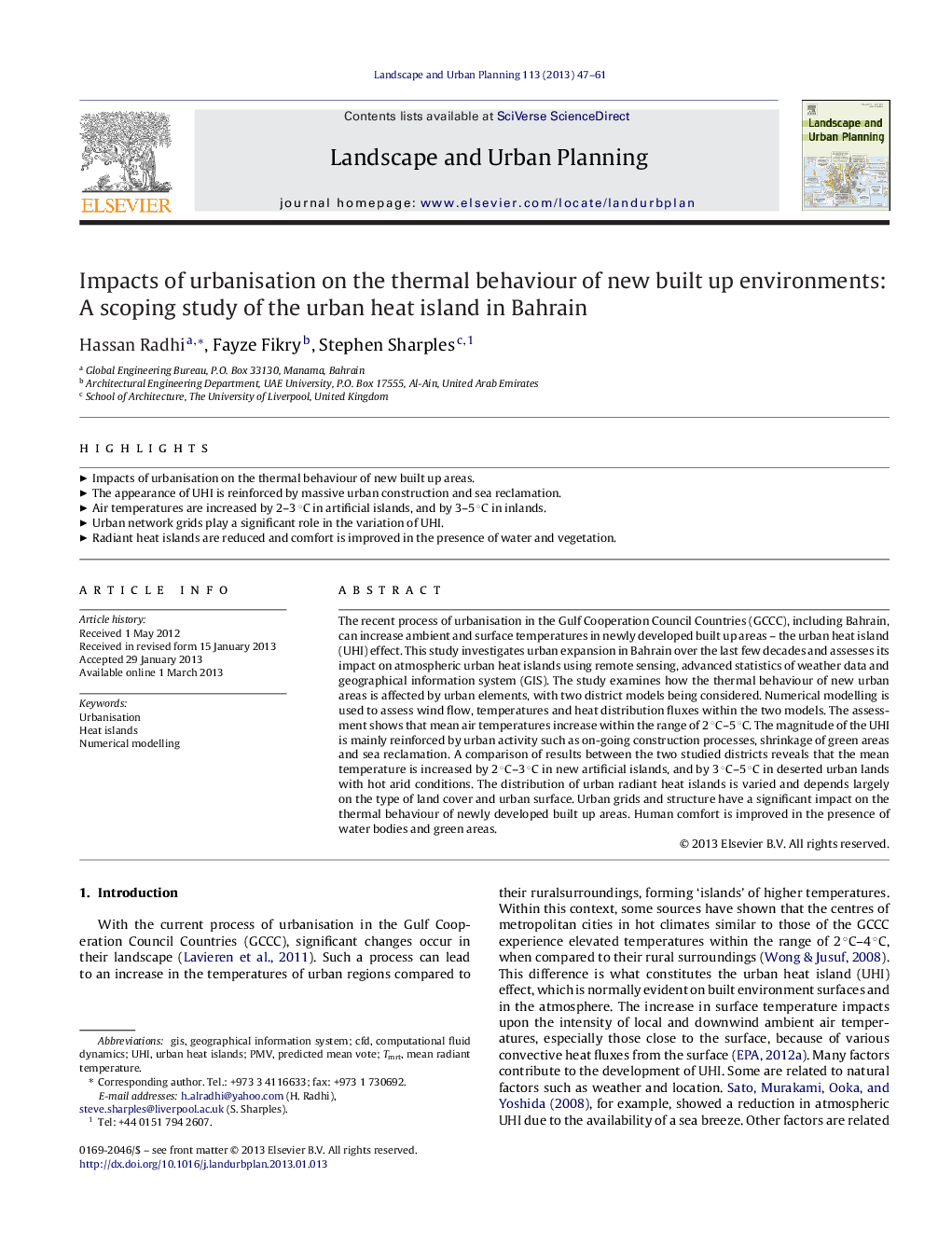| کد مقاله | کد نشریه | سال انتشار | مقاله انگلیسی | نسخه تمام متن |
|---|---|---|---|---|
| 1049415 | 1484645 | 2013 | 15 صفحه PDF | دانلود رایگان |

The recent process of urbanisation in the Gulf Cooperation Council Countries (GCCC), including Bahrain, can increase ambient and surface temperatures in newly developed built up areas – the urban heat island (UHI) effect. This study investigates urban expansion in Bahrain over the last few decades and assesses its impact on atmospheric urban heat islands using remote sensing, advanced statistics of weather data and geographical information system (GIS). The study examines how the thermal behaviour of new urban areas is affected by urban elements, with two district models being considered. Numerical modelling is used to assess wind flow, temperatures and heat distribution fluxes within the two models. The assessment shows that mean air temperatures increase within the range of 2 °C–5 °C. The magnitude of the UHI is mainly reinforced by urban activity such as on-going construction processes, shrinkage of green areas and sea reclamation. A comparison of results between the two studied districts reveals that the mean temperature is increased by 2 °C–3 °C in new artificial islands, and by 3 °C–5 °C in deserted urban lands with hot arid conditions. The distribution of urban radiant heat islands is varied and depends largely on the type of land cover and urban surface. Urban grids and structure have a significant impact on the thermal behaviour of newly developed built up areas. Human comfort is improved in the presence of water bodies and green areas.
► Impacts of urbanisation on the thermal behaviour of new built up areas.
► The appearance of UHI is reinforced by massive urban construction and sea reclamation.
► Air temperatures are increased by 2–3 °C in artificial islands, and by 3–5 °C in inlands.
► Urban network grids play a significant role in the variation of UHI.
► Radiant heat islands are reduced and comfort is improved in the presence of water and vegetation.
Journal: Landscape and Urban Planning - Volume 113, May 2013, Pages 47–61